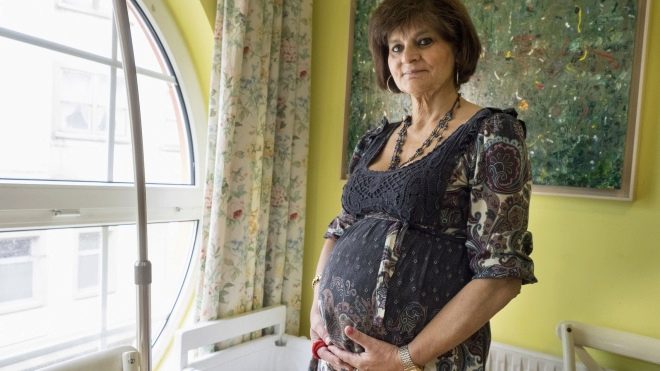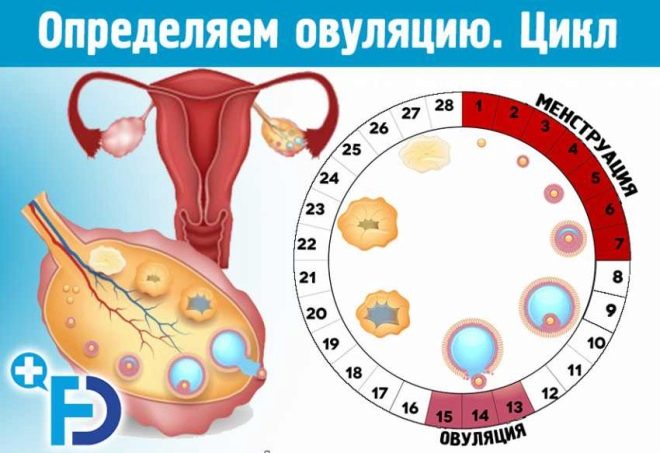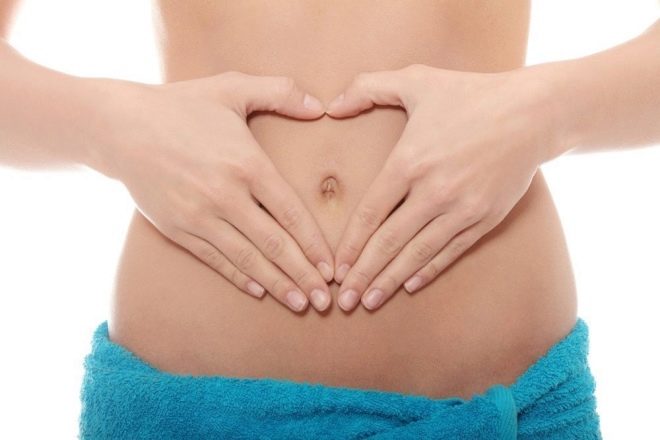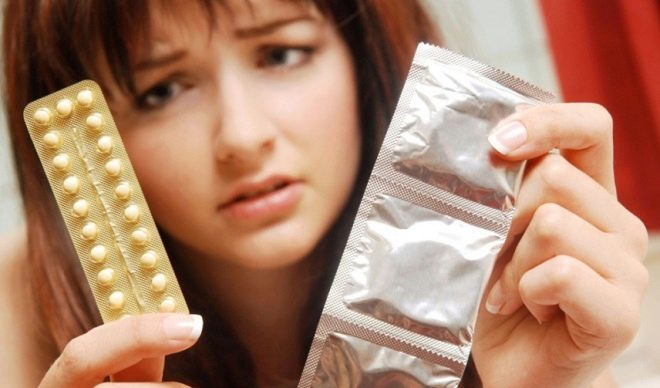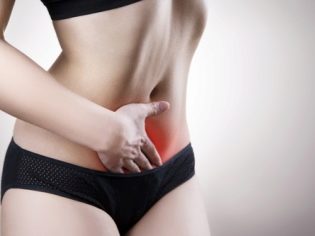All about female fertility
The ability to have offspring in medicine, sociology is often denoted by the concept of "fertility." Women, for whom the issues of procreation are very important historically and by birth, attach great importance to this issue, while not every woman knows how to determine her fertility and increase it, if necessary.
What it is?
The name of the term received from the Latin fertilis - fertile. In this way, Fertility is the ability of a woman’s body to reproduce viable offspring. The inability to have children is called the opposite concept - “sterility”.
People far from medical science have become accustomed to believing that women are of two types - fertile and fruitless, that fertility is either there or not. In fact, fertility in women is of three types:
- high;
- medium (normal);
- low.
To put it in simple terms, fertility of a woman is determined depending on whether she is able to conceive, bear and give birth.
- The absence of any of these factors indicates a woman’s low fertility, since the woman does not approach the desired goal (the child cannot be conceived, either endured, or a live baby is born).
- If a woman’s health is good, and she is able to conceive and bear and give birth, they say that she has normal (average) fertility.
- If the fair sex is not only possible to get pregnant, bear a child and give birth, but she is able to do this with minimal interruptions without compromising the health of her and her children, they speak of a high degree of fertility.
Fertility as a concept is used not only by gynecologists, obstetricians, fertility specialists and doctors of other specializations, but also by demographers. This term often appears in scientific disputes and statistics on fertility in the world.
To understand what happens with the fertility of one woman, a doctor works. To understand what is happening with the fecundity of an entire population of women in general, a demographer works, who uses the total fertility rate.
So, the World Health Organization experts estimated that up to 5% of women worldwide are barren. In Russia, 40 million women account for up to 6 million infertile women. Experts say that Soon, fertility in Russia per average woman will be even lower, and with 8% of barren ladies registered now, it will drop to 15% (which happened a long time ago, for example, in the same Europe).
Today there is a lot of controversy about the age at which a woman can be considered fertile, and it should be noted that the age bracket has risen. Today, according to statistics, women are considered fertile. aged 15 to 49 years. The share of fertile women in society is allocated a substantial share - up to 30%, which, apparently, has not yet allowed humanity to become extinct.
However, there are occasional situations in which individual women retain normal fertility even after 49 years, successfully giving birth at 50, and 55, and even 60 years and older. Doctors and scientists tend to believe that an increase in fertile age is a merit of progress. After all, IVF, egg donation, various assisted reproductive techniques and technologies are available today, which allows women to become mothers even after the average fertile period ends for them.
Ovulation factor
A man is able to conceive a baby on any day of his life upon reaching puberty and to the deepest old age. With women everything is different. Babies are born with the highest fertility in their entire lives. - several million immature eggs in the ovaries of newborn girls is an ovarian reserve. It is not replenished, but only consumed during life, and fertility gradually decreases.
Some oocytes die under the influence of adverse factors - bad habits, diseases, ecology, some are spent on ovulatory cycles. Termination of the fertile period means a critical depletion of the ovarian reserve and the onset of menopause.
In many ways, fertility is determined by the ability to normal, healthy ovulation, which occurs in women in the middle of the cycle. After menstruation, several follicles ripen under the influence of hormones, and only one (rarely two) become dominant. In the middle of the cycle, under the action of luteinizing hormone, the follicle bursts, an ovum ready for fertilization goes into the fallopian tube. Ovulation itself lasts no more than an hour, and a live and fertilizable egg remains for a day.
If ovulation does not occur, which is quite possible in some cycles, a woman cannot conceive a child. If ovulation does not occur at all, the woman is considered infertile. She is given appropriate treatment. Today, drugs are used to stimulate ovulation.
Even for women who do not experience any problems with ovulation, the chance of becoming pregnant in one cycle is about 30%. (up to 33% at the age of 20-25 years, 20% - after 25 years, 10% - after 30 years, about 7% - after 35 years, about 3% - after 40 years).
The woman possesses the highest fertility only during the period of ovulation and during the day after it, while the egg cell is alive. That is why women planning conception are advised to take measures to establish the day of their ovulation, and use special ovulation tests.
Ovulation may not occur for various reasons - stress, fatigue, hormonal disorders, age. After 35 years, women are considered to be completely normal, if anovulatory (“empty”) cycles per year occur up to 6, whereas for women up to 35 years old, such cycles per year occur from 1-2 strengths. Therefore, women under 35 are considered more fertile than women who have stepped over this age line.
Fertility Predictions - How do they test?
To determine the ability to bear children in a particular lady, a special test was created, which was called the “fertility prognosis”. Women who are interested in this issue may well use it.
- 5-6 day of the female cycle (on the last or last but one day of menstruation with their six-day duration), an ultrasound of the ovaries is done. In a healthy woman, the normal size of the reproductive gland is in the range from 20 to 120 mm, in one ovary at least 5 follicles mature in this stage. This determines the ovarian reserve.
- Additionally, laboratory tests can be performed - blood test for hormones FSH, LH.
In conclusion, the doctor indicates some strange and incomprehensible values for the majority of the weaker sex: “-2”, “0” or “+2”. What does this mean:
- «-2» - the ovarian reserve is exhausted, fertility is low, independent conception is almost impossible, unless a miracle intervenes in the matter;
- «0» - normal reserve, normal ability to conceive, bearing a fetus.
- «+2» - high fertility, a rich reserve, the probability that the pregnancy will occur in 1-2 planning cycles is very high.
A blood test is also reflected in the test. With the predominance of FSH (follicle-stimulating hormone) over LH, ovarian depletion is suspected, and fertility is low.
This test allows the doctor to first determine whether a woman can become a mother or need medical help without his help and access to reproductive technologies.
Low fertility, according to the prognostic test, is not a sentence. The woman will have to undergo treatment, a set of measures to increase the ability to bear children. Such measures usually allow conceiving and enduring a baby in 94% of women whose primary test showed poor results. Only 6% of women, according to statistics, need the help of fertility specialists (IVF, ICSI, etc.).
To determine your own period of high fertility (ovulation period) helps tests that are available in any pharmacy. They act similarly to tests for determining pregnancy, but they allow to establish ovulation, and not pregnancy, by the concentration of completely different substances (hCG during pregnancy, LH during ovulation).
Such tests are easy and simple in home use, the error and the probability of error is not so high.
High abilities - a phenomenon?
High fertility in medicine is often called a phenomenon. And indeed, some women manage to get pregnant even while taking contraceptives. The probability of phenomenal pregnancy increases, if not only fertility is estimated at a “+2” for a woman, but also for a man it is very high.
This is not very common, but it increases the likelihood of an unplanned pregnancy. Therefore, contraception with 100% efficacy does not exist: about 1% of women become pregnant while taking oral contraceptives, 5% when using a condom, and 3% with an established intrauterine device.
To these women, doctors almost cannot find a remedy that would help protect themselves from an unwanted pregnancy, they are recommended surgical sterilization, if there are already children and their number completely suits the woman, she does not agree to new births.
The reasons for increased female fertility have not been established by science; it is considered a natural phenomenon. It is believed that a predisposition to it can be inherited genetically through the female line.
Fertility rate
As already mentioned, the concept of "fertility" is used not only by doctors, but also by sociologists and demographers. And therefore there is a so-called fertility rate, which is not used for pregnancy planning, as many women think. This is a macroeconomic indicator necessary to correctly assess the level of births in a region, country, or world. It shows the average number of living children per woman in the selected territory. An important condition is that a woman in this statistic should be in reproductive age..
The formula for calculating the coefficient is simple: K = N \ n * 1000. K is the desired fertility rate, N is the total number of newborns for a certain period of time, for example, for a year or for 5 years, n is the number of women who are in reproductive age (15-49 years).
The result is estimated in ppm. In order for society to remain stable and not overcrowding or extinction, it is necessary that K be equal to 2.0 - 2.33. If K = more than 2.4, they talk about population growth, if the value is less than 2.0, they say about population reduction. Today (according to 2017 data) in Russia, the female fertility rate is 1.82. Draw your own conclusions.
What is affected?
Every woman, thinking about the offspring, is interested in the question of what can affect her fertility. There are several such factors of influence, they are diverse, and, of course, all deserve close attention.
- Age. This is the main factor. Female fertility declines significantly faster than male. As the female organism ages, not only does the number of full-fledged menstrual cycles with ovulation decrease, but the quality of the eggs themselves becomes lower, which also affects the ability to bear children (both to conceive and to prognoses for live birth, sometimes low quality oocytes cause DNA mutations and fetal chromosomal abnormalities incompatible with life).
- Excess weight. A very common reason for not being able to get pregnant with a healthy and favorable gynecological history. Extra pounds shift hormones, which increases the likelihood of violation of ovulatory processes. Weight reduction even by 5% increases the ability of a woman to conceive.
- Psychological instability, stress - a woman under stress increases the production of stress hormones, which partially block the production of sex hormones, which affects the nature of the cycle. The most intractable form of infertility in women, in particular, is idiopathic psychogenic infertility, in which a woman is healthy, and conception does not occur for psychosomatic reasons - fear of childbirth, unwillingness to give birth to a particular man, etc.
- Genital trauma - breaks the vagina, cervix, scars.
- Any diseases that cause hormonal imbalances - polycystic ovary, increased or decreased thyroid function, diabetes and a number of others.
- Diseases of the reproductive organs - obstruction of the fallopian tubes, prolonged and neglected inflammatory processes in the uterus, fried eggs, appendages. Adhesions, synechia.
- Multiple penetrations into the uterine cavity - abortions, scraping, including diagnostic ones. At the same time, the functionality of the endometrium decreases, as a result of which, even during the conception, the fertilized egg cannot consolidate and develop normally, it dies and is rejected.
- Eating and drinking disorders - it is very important for a woman to consume enough liquid, and fast food and food with an abundance of preservatives and dyes causes mutations in the DNA of oocytes.
- Non-inflammatory diseases of the reproductive organs - myoma, endometriosis, cysts, polyps, hyperplasia of the endometrial layer of the uterus.
- Adverse environmental conditions - multifactor effects have zones of increased radiation, polluted large cities, constant inhalation of dirty air, exhaust gases.
- Risks of professional activity - Work in enterprises with a high level of vibration exposure, electromagnetic radiation, contact with poisons, paints, varnishes, other toxic substances.
- Bad habits - smoking, alcohol, narcotic substances.
- Immunological disorders - Diseases and conditions in which a woman’s body produces antisperm antibodies that destroy sperm as foreign bodies. This often develops against the recognition of sperm as a foreign body, for example, when practicing anal sex with ejaculation in the rectum.
There are many reasons for the fertility of a particular woman. And they must be taken into account. This is important if it shows reduced fertility. Here it is important to first eliminate the harmful factors. Very often this alone is quite enough to help the couple solve the problem of infertility.
Why is going down?
Reduction or impairment of fertility in women is a condition in which the probability of conceiving and carrying out a baby decreases under the influence of adverse factors or is completely absent.Signs and symptoms of fertility decline are obvious - conception does not occur or pregnancy cannot be tolerated. A fertile woman with unprotected sexual contact becomes pregnant for about a year. If this does not happen, after a year of planning, she and her spouse are advised to consult a doctor to determine the reasons for the decline in fertility. Remember it is not about infertility as such; it is about identifying the causes and factors for reducing the fertility of partners.
The violation may be temporary, surmountable, and perhaps irreversible. It all depends on what reason caused changes that prevent procreation. But even with irreversible violation, there is a way out - it’s impossible to conceive naturally, but IVF and other assisted reproductive technologies will come to the rescue.
Temporary reductions are reversible and a woman will be able to increase fertility, which will completely solve the problem of procreation in a natural way. That is why temporary problems are called decline, and irreversible - violation.
Age features
The age of fertility in women is the period at which a woman can become a mother. This is usually indicated by the time interval from about 13 years before the period of the onset of menopause, when ovulation does not occur due to the depletion of the ovarian reserve. As soon as the girl begins her period, she theoretically enters the reproductive age, that is, she is able to conceive. The average age of menopause is 50-55 years.
Sociologists and demographers consider reproductive age from 15 to 55 years, but physicians have a different opinion - adolescents, despite the presence of menstruation, are not ready physiologically and psychologically for bearing and giving birth, and women over 40 have difficulty in conceiving due to changes in the quality of oocytes. Therefore, doctors, speaking of a favorable reproductive age, usually mean age from 20 years to 40 years.
The whole prolific life of a woman is divided into several periods.
- Early reproductive stage. It starts together with the first menstruation and ends at the age of 20 - infrequent ovulations, an irregular cycle, hormonal background unstable, however, the probability of becoming pregnant in already sexually active women is very high.
- The average reproductive period. It starts at 20 and ends at 40 years of age - ovulation is quite regular, hormonal levels, if there are no associated diseases, are stable, good health, the ability to bear and give birth to a child is high, but the probability of becoming pregnant decreases slightly.
- Late reproductive period - from 40 to 45 years. At this time, ovulation is still fairly regular, monthly go evenly, clearly, but the hormonal background begins to rebuild, the first preclimacteric changes begin to influence the body. The probability of conceiving is reduced, but the ability to bear and give birth is quite high.
- Fertility stress - from 46 to 58 years. At this time, a woman enters a menopause. The cycle becomes irregular, ovulation occurs less and less, hormonal levels are characterized by low levels of sex hormones. The probability of getting pregnant is low, but even if this happens, the pregnancy necessarily requires hormone maintenance therapy - the woman’s own hormones for pregnancy and childbirth are not enough.
Doctors consider the best age for childbearing to be from 20 to 40 years.
How to increase the ability to bear children?
Increase fertility will help a set of measures, which implies a lifestyle change. But you should start with a visit to the doctor and examination. If you do not treat all infections, inflammatory processes, no other measures will help to conceive a baby, no matter how accurate the calculations in the calendar, no matter how striped ovulation tests, etc.
That is why it is important to find the reason or several reasons why fertility has decreased. While the negative factor is working, there can be no talk of increasing the ability to conceive.
The following actions help to increase fertility in women.
- Sex life should be regular, change of partners is not welcome, it is better to have sex with a regular partner at least twice a week.
- Diets to increase fertility does not exist, more precisely, the recommendations relate to the abolition of all diets. Low-calorie foods, lack of meat, carbohydrates, mono diets reduce the ability of women to conceive. When planning, attention should be paid to adequate nutrition.
- Refusal from bad habits can significantly increase fertility rates.
- Vitamins should be taken only on prescription. In the complexes to increase fertility, selenium, magnesium, vitamins E, C, B, folic acid prevail.
- You can not give up reasonable moderate physical exertion.
- During the period of ovulation contraindicated use of painkillers, they violate the ovulation stage.
- At the planning stage of the child, a woman is not recommended to drink coffee and strong tea.
If there is excess weight, you should reduce it.
All drugs that are positioned as a means of increasing fertility are not a panacea. In most cases, these are dietary supplements. But they should be taken only with the permission of the doctor. These include “Pregnoton”, “Tribesan”, “Ovariamin”.
Hormonal agents to stimulate ovulation can not be taken without the knowledge of the doctor. Such cycles are under the supervision of a physician and ultrasound. For these purposes, apply Clomiphene, Klostilbegit, Metrodin, Pregnil and other means.
10 recommendations on how to increase fertility, see the following video.



